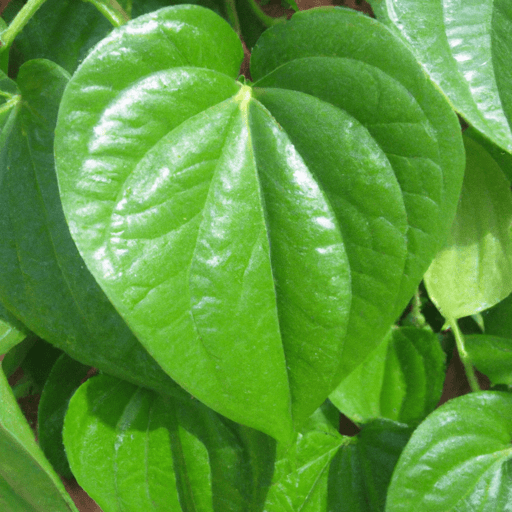Exploring the Flavorful World of Betel Leaf
If you’re an adventurous food lover, then get ready to tantalize your taste buds with the vibrant and aromatic world of betel leaf. Known for its distinctive flavor and versatility, this ancient culinary ingredient has been cherished in various cultures for generations. In this blog post, we will dive into the world of betel leaf, discovering its taste, common uses in cooking, nutritional value, and fascinating history and facts.
Taste Sensation
Betel leaf, also known as paan or pepper leaf, offers a unique and captivating flavor profile. When you bite into a betel leaf, you’ll experience an explosion of flavors that are at once peppery, earthy, and slightly bitter, with hints of citrus and spice. The aromatic qualities of the leaf add an enchanting fragrance to any dish it graces.
Versatile Culinary Uses
Betel leaf holds a prominent place in various cuisines across the globe. Its versatility translates into a wide range of culinary applications. The leaf is often used as a wrapper or vessel for creating flavorful bites. In traditional Southeast Asian cooking, betel leaves are commonly used to wrap ingredients like minced meat, herbs, nuts, or fruits, creating delectable parcels bursting with flavor and texture.
In some cuisines, betel leaves are used in stir-fries, curries, or soups, infusing a delightful aroma and distinct taste. The leaves can even be finely chopped and added as a piquant garnish to salads, salsas, and chutneys, introducing a refreshing complexity to the overall dish. With its adaptability, betel leaf offers endless possibilities for adventurous cooks to experiment with and create mouthwatering creations.
Nutritional Powerhouse
Beyond its enticing flavor, betel leaf packs a wholesome nutritional punch. Rich in vitamins A and C, betel leaf contributes to boosting your immune system and maintaining healthy skin and vision. Additionally, it contains essential minerals like calcium and iron that are vital for strong bones and oxygen circulation in the body.
Interestingly, betel leaf has been traditionally used for its potential medicinal benefits. It is believed to aid digestion, freshen breath, and even possess antimicrobial properties. While more research is needed to substantiate these claims, betel leaf remains a fascinating ingredient with possible health benefits.
Historical Significance and Curious Facts
The use of betel leaf has a rich and diverse cultural history. It can be traced back thousands of years across regions such as South Asia, Southeast Asia, and the Pacific Islands. In many societies, betel leaf has played ceremonial and ritualistic roles, symbolizing hospitality, friendship, and social cohesion.
In some cultures, offering betel leaves to guests is considered a gesture of respect and goodwill. The act of chewing betel leaf is often associated with communal bonding and sharing stories. It is believed to stimulate conversation and enhance social connections, exemplifying the deep cultural significance attached to this humble leaf.
Let Your Culinary Adventure Begin!
Now that you’re acquainted with the tantalizing taste, versatile uses, nutritional benefits, and intriguing history of betel leaf, you can embark on your culinary exploration with confidence. Whether you incorporate betel leaf into traditional recipes or venture into creating innovative dishes, its vibrant flavor and cultural heritage will undoubtedly elevate your culinary endeavors. So, why not infuse your cooking with a touch of betel leaf and open up a world of extraordinary flavors!
Now it’s your turn to get creative! Share your favorite recipes or experiences with betel leaf in the comments below. Let’s journey together into the alluring world of betel leaf!
Betel Leaf
- Origin: Betel leaf is native to Southeast Asia and is widely grown across countries such as Thailand, Indonesia, Malaysia, and India. It has been cultivated for centuries and is deeply rooted in the cultural traditions of these regions.
- Common Uses: Betel leaf has a distinctive flavor and is commonly used as a wrapping for chewing betel quids, also known as paan, which are a combination of betel leaf, areca nut, slaked lime, and various sweeteners and spices. In addition to this traditional use, betel leaves are also used in cooking, particularly in Southeast Asian cuisines. They can be used to wrap meat or seafood before grilling or steaming, imparting a unique aroma to the dish.
- Nutritional Benefits: Betel leaves are rich in vitamins C, B1, and B3, as well as minerals such as calcium, phosphorus, and iron. They also contain essential oils, antioxidants, and phytochemicals that contribute to their potential health benefits.
- Unique Properties: Betel leaves have a peppery and slightly bitter taste, with a distinct aroma. They are known for their antibacterial properties and have been used in traditional medicine for treating various ailments, such as bad breath, indigestion, and wound healing.
- Historical Significance: Betel leaf has a long history in traditional medicine and cultural practices. In many Southeast Asian countries, it is considered a symbol of hospitality and often presented to guests. It has also been an integral part of religious and ceremonial practices in several cultures, where it is often offered to deities or used in auspicious rituals.




Use the share button below if you liked it.
It makes me smile, when I see it.